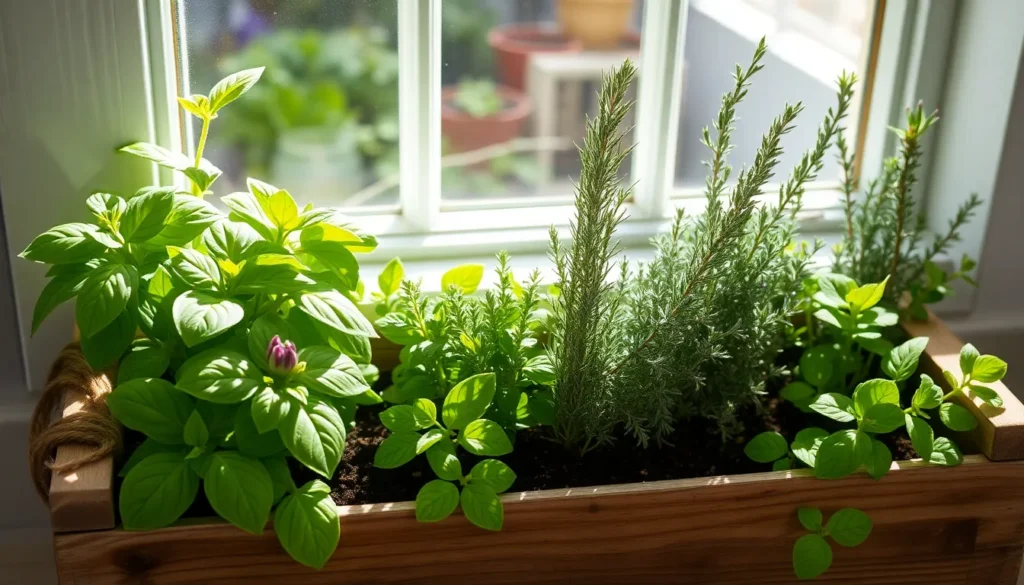Imagine stepping into your kitchen and being greeted by the fresh aroma of basil, mint, or thyme, all grown by your own hand. Creating a DIY indoor herb garden not only enhances your culinary adventures but also brings a touch of nature into your home, regardless of the season. Whether you’re a green-thumbed veteran or a budding gardener taking your first steps, cultivating herbs indoors is an enriching experience that can be tailored to fit any living space. By growing your own herbs, you gain the satisfaction of knowing exactly where your ingredients come from, all while enjoying the therapeutic benefits of gardening.
As we delve into the world of indoor herb gardening, you’ll discover how simple it can be to start your own mini Eden. This guide will walk you through selecting the right herbs, understanding their unique needs, and arranging them in a way that complements your home environment. Even if you’ve never planted a seed before, you’ll find the instructions easy to follow, with tips and tricks that will help you nurture your plants with confidence. Seasoned gardeners will also appreciate the opportunity to refine their skills and explore new possibilities in container gardening.
By the end of this article, you’ll have a clear blueprint for setting up your own indoor herb oasis, complete with practical advice on lighting, watering, and harvesting. We’ll explore creative ideas for repurposing everyday items into charming plant containers and how to maintain the perfect balance of care. Whether you’re aiming to enhance your culinary creations or simply add a dash of greenery to your space, your journey into indoor herb gardening promises to be both rewarding and delightful. Let’s embark on this green adventure together, turning your home into a haven of fresh flavors and vibrant foliage.
Choosing the Perfect Containers
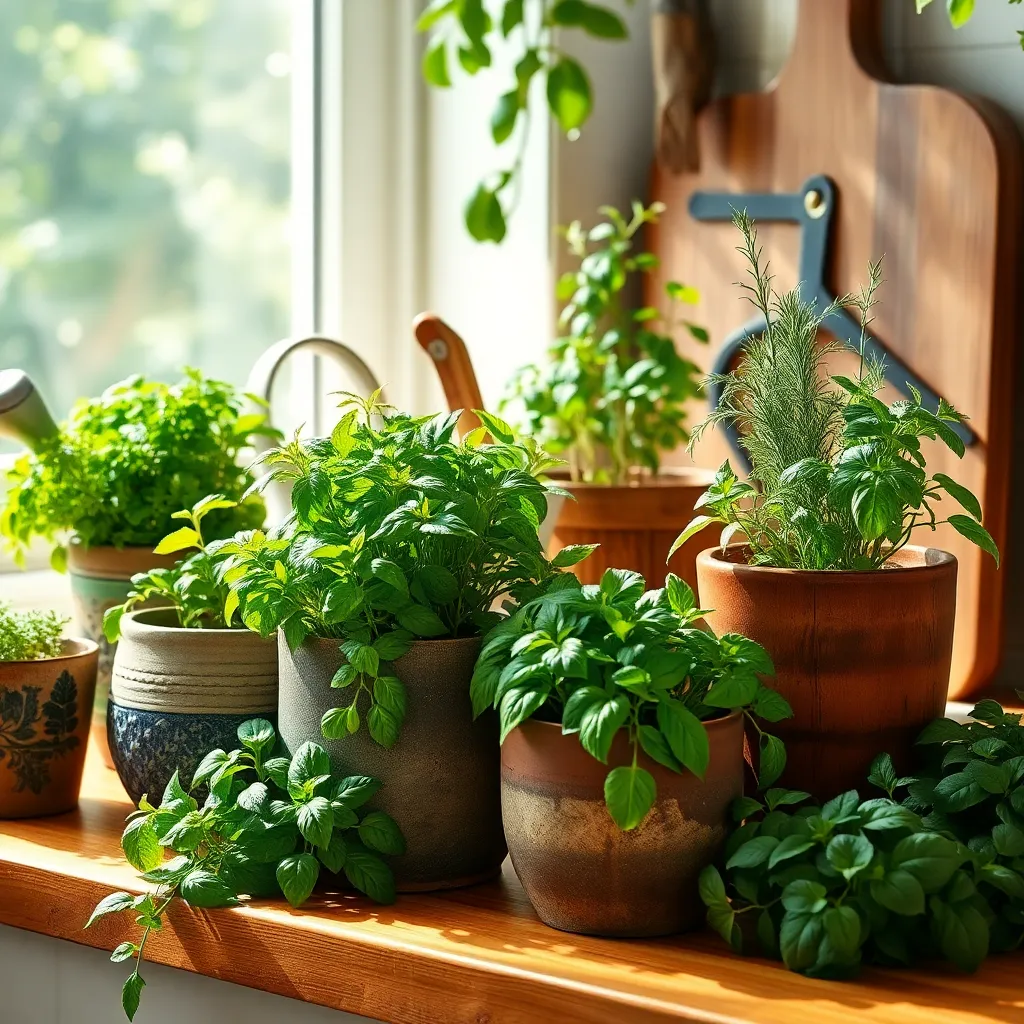
When setting up your indoor herb garden, selecting the right containers is crucial for healthy plant growth. Choose containers with good drainage to prevent waterlogged roots, which can lead to root rot.
Consider the size of the container in relation to the herb you are planting. Most herbs like basil, parsley, and cilantro thrive in containers that are at least 6 to 8 inches deep, providing enough space for root development.
Material choice can also impact plant health. Terracotta pots are a great option as they allow air and moisture to move through the walls, promoting healthy root systems, but note that they may dry out faster than plastic pots.
For a more advanced approach, try using self-watering containers, which can help maintain consistent moisture levels for your herbs. These are especially useful for beginner gardeners who might not yet be attuned to their plants’ water needs.
Selecting Your Herb Varieties
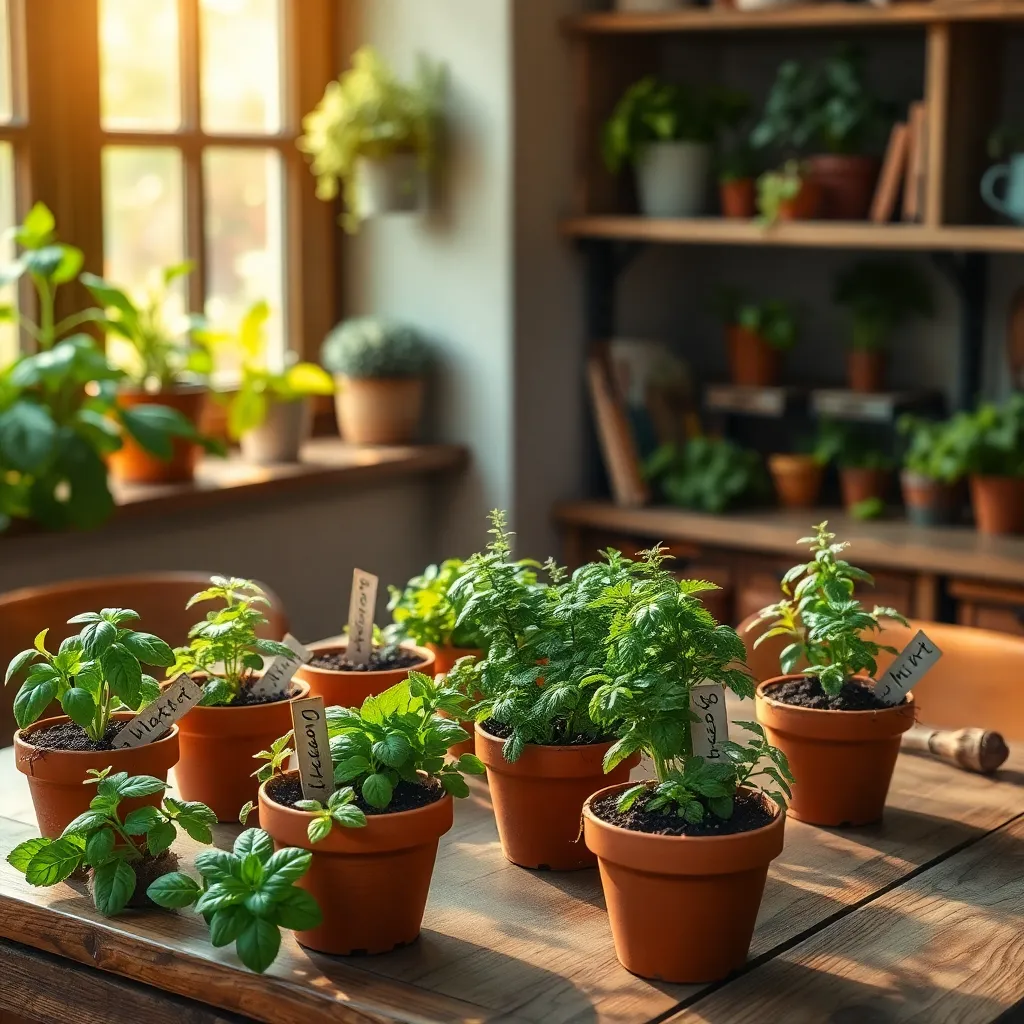
When selecting herb varieties for your indoor garden, consider your cooking preferences and available space. Choose herbs that you frequently use in your dishes, such as basil, parsley, or thyme, which thrive well indoors and are highly versatile in culinary use.
Consider the light and temperature conditions in your home to ensure successful growth. Most herbs, like rosemary and sage, require at least six hours of sunlight, so placing them near a south-facing window is ideal.
For beginners, start with easy-to-grow herbs like mint, chives, and cilantro, which can adapt to various light conditions and are forgiving of occasional neglect. However, for those with more experience, experimenting with herbs like oregano or lavender can be rewarding but may require more precise care and attention to humidity levels.
Utilize a high-quality potting mix with good drainage to support healthy herb growth. A mix with perlite or sand will prevent root rot by ensuring proper aeration and moisture control.
Water your herbs consistently but sparingly, allowing the top inch of soil to dry out between waterings. Overwatering is a common mistake that can lead to root rot, so it’s better to underwater slightly than to keep the soil too damp.
Optimal Indoor Lighting Solutions
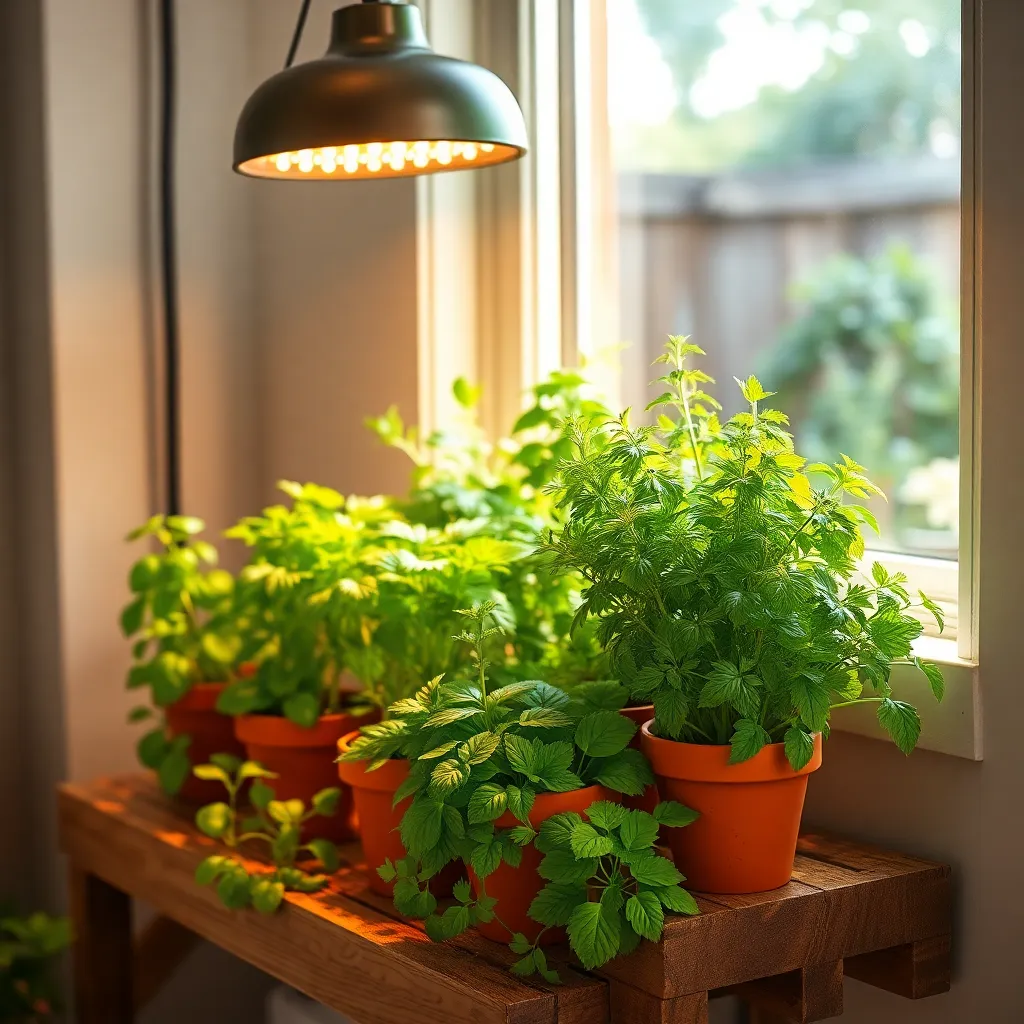
Understanding the lighting needs of your indoor herbs is crucial for their growth and vitality. Most herbs require at least 6 hours of direct sunlight per day, so consider placing your garden near a south or west-facing window for optimal light exposure.
For those without sufficient natural light, grow lights are an excellent alternative. LED grow lights are energy-efficient and can be tailored to the specific light spectrum that herbs need for photosynthesis.
When using grow lights, position them about 6 to 12 inches above your plants to mimic the sun’s intensity. It’s important to keep the lights on for 12 to 16 hours daily, simulating the long daylight hours of spring and summer.
Adjusting the distance between the light and your herbs can help prevent them from becoming leggy, a common issue when light is insufficient. Regularly rotate your plants to ensure even growth, and adjust the light duration as necessary based on your herbs’ specific needs.
Soil Mix and Planting Tips
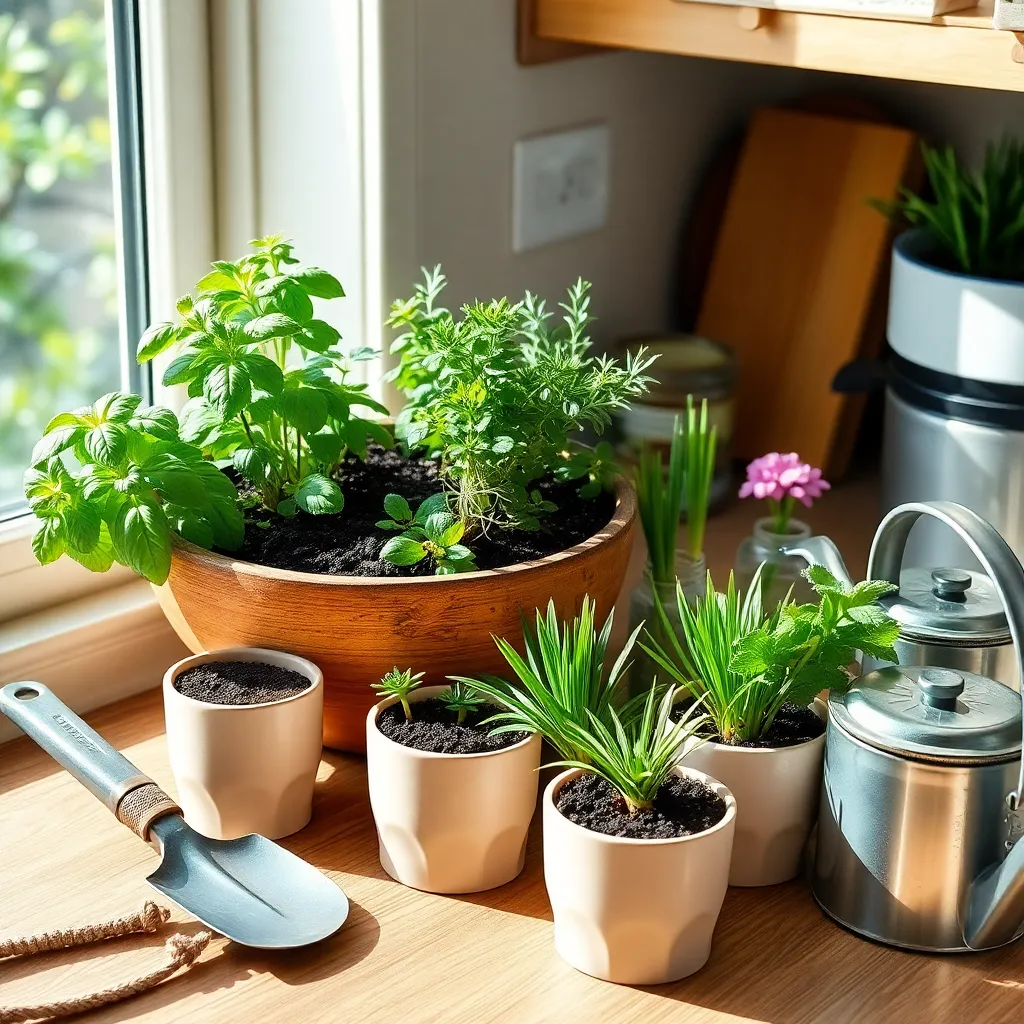
Creating the ideal soil mix is crucial for ensuring your indoor herbs thrive. A well-draining potting mix is recommended, incorporating components like coco coir, perlite, and worm castings to promote healthy root growth.
For beginners, a simple mix of equal parts potting soil, perlite, and vermiculite will suffice. These components improve aeration and prevent the common issue of root rot by ensuring excess water can drain away effectively.
Experienced gardeners might consider customizing their soil mix to suit specific herbs. For instance, Mediterranean herbs like rosemary and thyme prefer a gritty texture, so adding coarse sand can mimic their native environment.
When planting your herbs, ensure that each herb has adequate space to grow, both above and below the soil. Typically, this means selecting pots that are at least 6 inches in diameter, providing ample room for roots to expand and absorb nutrients efficiently.
Watering is a key aspect of maintaining your indoor herb garden. Most herbs prefer slightly moist soil but not waterlogged conditions, so aim to water them once the top inch of soil feels dry to the touch.
To prevent over-watering, use pots with drainage holes and consider placing a tray underneath to catch excess water. This simple practice helps maintain the right moisture levels and prevents the roots from sitting in stagnant water, which could lead to disease.
Regular Care and Maintenance Guide

Consistent care is crucial for a thriving indoor herb garden. Begin by ensuring your herbs receive adequate light, ideally placing them near a south-facing window to provide six to eight hours of sunlight daily. If natural light is insufficient, consider using LED grow lights to supplement their exposure. Adjust the height of these lights as your plants grow to maintain optimal light intensity.
Watering is a key aspect of herb care, and each plant may have different needs. As a general rule, allow the top inch of soil to dry out between waterings, but always check each plant’s specific requirements. Overwatering is a common mistake, so ensure pots have adequate drainage holes to prevent waterlogging. Using a moisture meter can help you better understand your plants’ hydration needs.
Regular pruning encourages healthy growth and bushier plants. Trim herbs like basil and mint frequently to promote new shoots and prevent them from becoming leggy. Use clean, sharp scissors to make precise cuts just above a leaf node. For herbs prone to flowering, like cilantro, pinch off flower buds to extend their growing season and enhance leaf production.
Nutrient management is vital for indoor herbs, as they rely on you for their food. Apply a balanced, water-soluble fertilizer every four to six weeks to provide essential nutrients. For advanced care, consider making your own compost tea to enrich the soil naturally. Monitor for signs of nutrient deficiency, such as yellowing leaves, and adjust your fertilization schedule accordingly.
Conclusion: Growing Success with These Plants
Creating a DIY indoor herb garden is more than just a delightful hobby; it’s a nurturing endeavor that parallels the growth of healthy relationships. By setting a strong foundation with the right environment, fostering continuous growth with consistent care, allowing room for individual uniqueness, maintaining open communication, and celebrating little successes, you cultivate both vibrant plants and relationships.
To take immediate action, begin by choosing a small space in your home to set up your herb garden. Gather your loved ones, and make this a shared project, discussing which herbs to grow and how each can contribute to the process. This collaborative effort not only enhances your home but also strengthens your bonds.
Remember, nurturing relationships, much like tending to a garden, requires ongoing attention and willingness to adapt. Bookmark this article to revisit these insights and remind yourself of the parallels between your herb garden and your relationships. As you watch your plants flourish, envision a future where your relationships are just as thriving and resilient. Take the first step today, and let this journey of growth inspire long-lasting relationship success.

